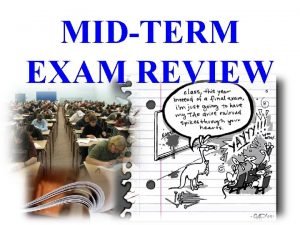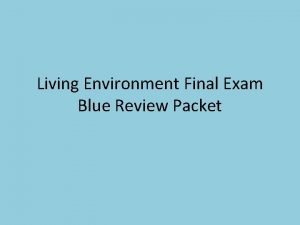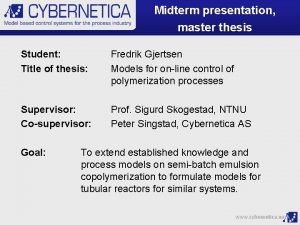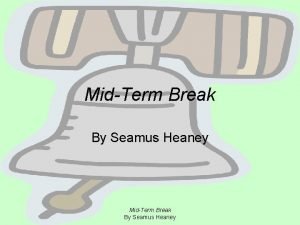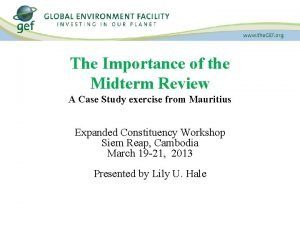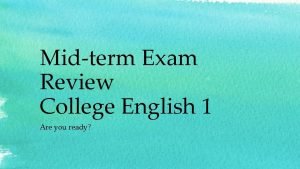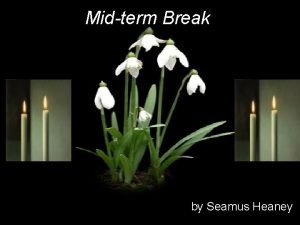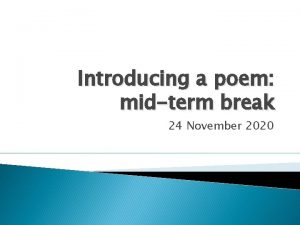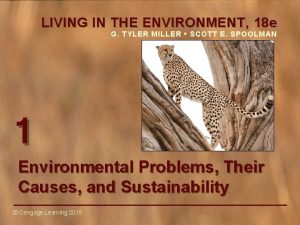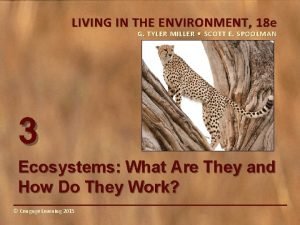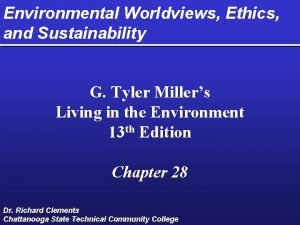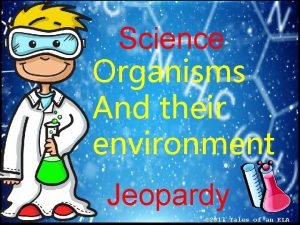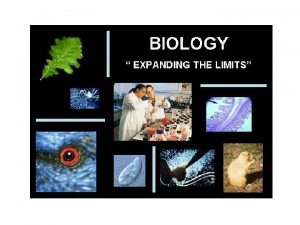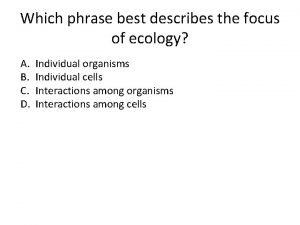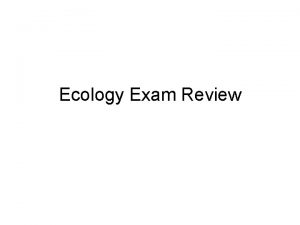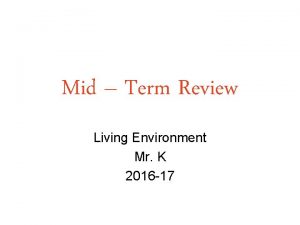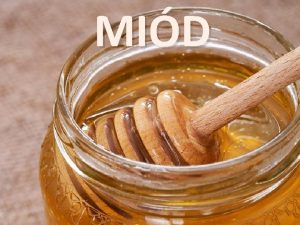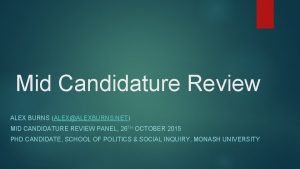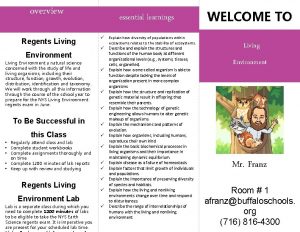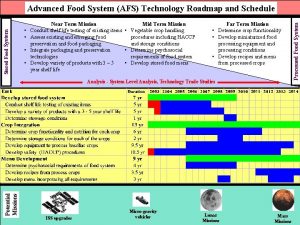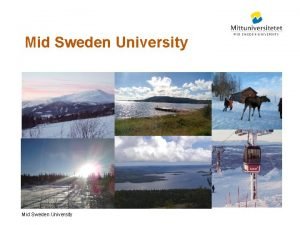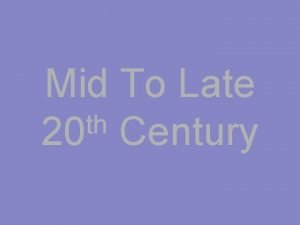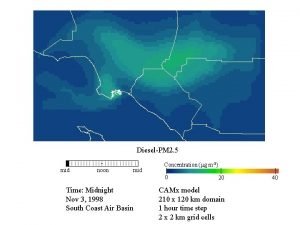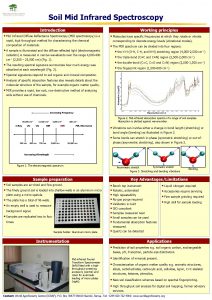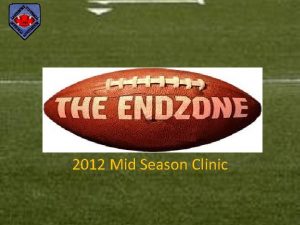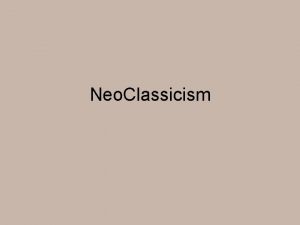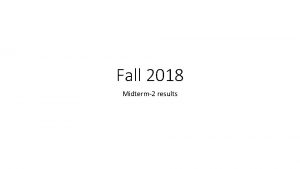Mid Term Review Living Environment Mr K 2016









































- Slides: 41

Mid – Term Review Living Environment Mr. K 2016 -17

Board Questions! • Why are antibodies and receptor molecules similar? Shape determines function • What has contributed to the decrease in the number of bacterial cases in the U. S. Use of anti-biotics • When investigating scientific information, which resources are the best to use? Scientific - academic Journals • What are some functions of WBC? eat / engulf (phagocytosis), tag / flag (identify), and prepare for future infections • What are vaccinations and what do they do? weakened versions of the pathogen, and they contribute to building up the immunity of the body incase of a secondary infection.

Section 1 -1 What Is Science? A. What Science Is and Is Not B. Evidence Based on Observation C. Interpreting the Evidence D. Explaining the Evidence E. A Scientific View of the World F. Science and Human Values Go to Section:

Observation • Observation is contact with the world through the use of the senses. • Observation gives us material for thought, reflection, and judgment. • Observation is influenced by experience, knowledge and emotion. • Attention plays an important part in observation. • A sharp eye for details is an important skill for many professions: scientists, physicians, artists, instructors, accountants, and investigators, among others.

Inference • • • We draw inferences on the basis of observations, or on conclusions drawn from previous observations. Inference is the interpretation of facts. (A statement of fact is an observation statement that can be verified by the use of the senses. ) Inferences express probability (likelihood), not certainty. Our training and background provide a basis for our inferences. Inferences enable us to assess and evaluate conditions and make predictions.

Observation / Inference A student observes that an organism is green. A valid conclusion that can be drawn from this observation is that (1) the organism must be a plant (2) the organism cannot be single celled (3) the organism must be an animal (4) not enough information is given to determine whether the organism is a plant or an animal Why do scientists consider any hypothesis valuable? (1) A hypothesis requires no further investigation. (2) A hypothesis may lead to further investigation even if it is disproved by the experiment. (3) A hypothesis requires no further investigation if it is proved by the experiment. (4) A hypothesis can be used to explain a conclusion even if it is disproved by the experiment.

Section 1 -2 Designing an Experiment State the Problem Analyze Results Form a Hypothesis Draw a Conclusion Set Up a Controlled Experiment Publish Results Record Results Go to Section:

Figure 1 -8 Redi’s Experiment on Spontaneous Generation Section 1 -2 OBSERVATIONS: Flies land on meat that is left uncovered. Later, maggots appear on the meat. HYPOTHESIS: Flies produce maggots. PROCEDURE Uncovered jars Controlled Variables: jars, type of meat, location, temperature, time Covered jars Several days pass Manipulated Variables: gauze covering that keeps flies away from meat Responding Variable: whether maggots Maggots appear No maggots appear CONCLUSION: Maggots form only when flies come in contact with meat. Spontaneous generation of maggots did not occur. Go to Section:

Scientific Method • Which statement about a controlled experiment is true? 1. 2. 3. 4. • All the variables must be kept the same. Only one variable is changed at a time. Scientists always use controlled experiments. Controlled experiments cannot be performed on living things. A scientific theory is 1. 2. 3. 4. Another word for hypothesis A well-tested explanation that unifies a broad range of observations The same as the conclusion of an experiment Established when the conclusions of two separate experiments are the same

Sample Essay Question An experiment was carried out to determine how competition for living space affects plant height. Different numbers of plants were grown in three pots, A, B, and C. C All three pots were the same size. The data collected are shown in the table below. Analyze the experiment that produced the data shown in the table. In your answer be sure to:

Reliability and Validity • A student hypothesized that lettuce seeds would not sprout (germinate) unless they were exposed to darkness. The student planted 10 lettuce seeds under a layer of soil and scattered 10 lettuce seeds on top of the soil. The data collected are shown in the table below. One way to improve the validity of these results would be to a) conclude that darkness is necessary for lettuce seed germination b) conclude that light is necessary for lettuce seed germination c) revise the hypothesis d) repeat the experiment

Laboratory Equipment/Skills • Graphing – Line/Bar Graphs – Interpretation of Data (Sets of Observations) • Microscopes – Field of view – Fine and Coarse adjustments • Slides – Cover slips – Staining – Creating Wet Mounts • Measurement – Volume, mass, distance

Section 1 -4 Making a Graph From A Data Table Time Absorbed by Roots (g/h) Released by Leaves (g/h) 8 AM 10 AM 12 PM 4 PM 6 PM 8 PM 1 1 4 6 9 14 10 2 5 12 17 16 10 3 Relative Rates (g/h) Water Released and Absorbed by Tree 20 Water released by leaves 15 10 5 Water released by leaves 0 8 AM 10 AM 12 PM 4 PM 6 PM 8 PM Sample Regents Graph Plot the data for dissolved oxygen on the grid. Surround each point with a small circle and connect the points. [1] Go to Section: Time

Graphing A graph of the population growth of two different species is shown below. Which conclusion can be drawn from information in the graph? a) Oxygen concentration affects population sizes of different species in the same manner. b) Species A requires a high oxygen concentration for maximum population growth. c) Species B requires a high oxygen concentration to stimulate population growth. d) Low oxygen concentration does not limit the population size of either species observed.

Microscopes • While viewing a specimen under high power of a compound light microscope, a student noticed that the specimen was out of focus. Which part of the microscope should the student turn to obtain a clearer image under high power? A) B) C) D) eyepiece coarse adjustment fine adjustment nosepiece The diagrams below show four different one-celled organisms (shaded) in the field of view of the same microscope using different magnifications. Which illustration shows the largest one-celled organism? a) b) c) d)

Slides and Wet Mounts Staining Techniques. Cover Slips:

Measurements Using Graduated Cylinders. Using Metric Rulers.

Section 2 -1 Biochemistry The Nature of Matter A. Atoms B. Elements and Isotopes 1. Isotopes 2. Radioactive Isotopes C. Chemical Compounds D. Chemical Bonds 1. Ionic Bonds 2. Covalent Bonds 3. Van der Waals Forces Go to Section:

p. H Scale Section 2 -2 Increasingly Basic Oven cleaner Increasingly Acidic Neutral Go to Section: Bleach Ammonia solution Soap Sea water Human blood Pure water Milk Normal rainfall Acid rain Tomato juice Lemon juice Stomach acid

Concept Map: Carbon Compounds Section 2 -3 Carbon Compounds include Carbohydrates Lipids Nucleic acids Proteins that consist of Monomer Fats and oils which contain Carbon, hydrogen, oxygen Go to Section: Monomer Sugars and starches Carbon, hydrogen, oxygen Monomer Nucleotides Amino Acids which contain Carbon, hydrogen, oxygen, nitrogen, phosphorus Carbon, hydrogen, oxygen, nitrogen,

Biochemistry For which organic compounds must information be encoded in DNA for green plants to synthesize the other three compounds? 1. 2. 3. 4. Proteins Sugars Fats Starches

Section 2 -4 Chemical Reactions Energy-Absorbing Reaction Energy-Releasing Reaction Activation energy Products Activation energy Reactants Go to Section: Reactants Products

Enzyme Action: “Lock and Key” Section 2 -4 Model Proteins Enzyme Glucose (hexokinase) Products Substrates ADP Glucose-6 phosphate Products are released ATP Active site Enzyme-substrate complex Substrates bind to enzyme Substrates are converted into products Go to Section: Regents Example: monomers becoming a polymer.

Protein “Shape Determines Function” • Proteins: • Receptors • Hormones • Antibodies • Antigens • Pathogens • Enzymes Receptor Sites!

Bio – Chem Question The equation below represents a chemical reaction that occurs in humans. • What data should be collected to support the hypothesis that enzyme C works best in an environment that is slightly basic? • a) • b) • c) The amino acid sequence of enzyme C The amount of substance W produced in five minutes at various p. H levels The shapes of substances X and Y after the reaction occurs • d) The temperature before the reaction occurs

Carbon Compounds The diagram below provides some information concerning proteins. Which phrase is represented by A? • a) sequence of amino acids • b) sequence of simple sugars • c) sequence of starch molecules • d) sequence of ATP molecules

Characteristics of Living Things Section 1 -3 Characteristic Examples Living things are made up of units called cells. Living things reproduce. Many microorganisms consist of only a single cell. Animals and trees are multicellular. RBC, Nerve, etc… Maple trees reproduce sexually. A hydra can reproduce asexually by budding. Continuance of Life! Flies produce flies. Dogs produce dogs. Seeds from maple trees produce maple trees. RNA / DNA Flies begin life as eggs, then become maggots, and then become adult flies. Mr. K’s baby ~ Christian Living things are based on a universal genetic code. Living things grow and develop. Living things obtain and use materials and energy. Plants obtain their energy from sunlight. Animals obtain their energy from the food they eat. Photosynthesis / Cellular Respiration Living things respond to their environment. Leaves and stems of plants grow toward light. Adapt Living things maintain a stable internal environment. Despite changes in the temperature of the environment, a robin maintains a constant body temperature. Homeostasis !! Taken as a group, living things change over time. Go to Section: Plants that live in the desert survive because they have become adapted to the conditions of the desert. Evolution

Characteristics of Life 1. To remain healthy, organisms must be able to obtain materials, change the materials, move the materials around, and get rid of waste. These activities directly require A. B. C. D. Energy from ATP The replication of DNA Nutrients from inorganic sources Manipulation of altered genes

Levels of Organization Section 1 -3 Biochemistry and Cells Unit Organism Individual living thing Bison Tissues, organs, Groups of and organ systems Cells Brain Nervous tissue Cells Nervous system Smallest functional unit of life Nerve cell Groups of atoms; smallest unit of Molecules most chemical compounds Go to Section: Water DNA

Levels of Organization 1. Which sequence represents the correct order of levels of organization found in a complex organism? A. B. C. D. Organelles -- cells -- tissues -- organ system Cells -- organelles -- organ system -- tissues Tissues -- organ system -- organelles -- cells Organs -- organ systems -- cells -- tissues -- organelles Tissue Example:

CELLS: Cell Specialization / Differentiation • The diagram below can be used to refer to: – Fertilization (“A”) – Meiosis (“A”) ~ sperm and egg – genetically different (haploid) – Mitosis (“B”) ~ genetically identical cells (diploid) – Differentiation (“D”) ~ Specialized cells for specialized function

Meiosis • Formation of gamates (sex cells) – Sperm and Egg • Contains half the genetic Material – Haploid (for humans – 23 chromosomes) • Are Genetically Different than parent cell. – Crossing-over may occur (Increases Variation) 8 8 4 4 4 4 8 Zygote

Mitosis • Creates daughter cells “Genetically Identical” to parent cell. • Contains complete set of chromosomes – Diploid (for humans – 46 chromosomes) • Used during growth and development • Phases: – Prophase, Metaphase, Anaphase, Telophase • Pro – Chromosomes become visible • Meta – Chromosomes line up in middle of cell • Ana – Chromosomes separated ensuring each daughter cell has equal numbers • Telo – Nuclear envelope reestablishes itself

Transportation • The diagram below shows the relative concentration of molecules inside and outside of a cell. Which statement best describes the general direction of diffusion across the membrane of this cell? • Here, Oxygen, Carbon Dioxide and Glucose would diffuse OUT (High to Low) • Protein would diffuse IN (High to Low) • ANYTHING in the direction of LOW to HIGH Active Transport – REQUIRING ENERGY

Movement Continued In the diagram below, which structure selectively allows materials to move into and out of the cell? # 4 the cell membrane! Osmosis : Is the movement of water from an area of High concentration to an area of Low concentration: Water movement balances solute concentrations inside and outside the cell. Causing the cell to either shrink or enlarge.

Photosynthesis Experimental Setup ~ Be Observant Use of Light, gas bubbles, “green” plant Another way of looking at Photosynthesis ~ use of cell organelle.

Cellular Respiration All life depends on the availability of usable energy. This energy is released when a. organisms convert solar energy into the chemical energy found in food molecules b. respiration occurs in the cells of producers and high energy molecules enter the atmosphere c. cells carry out the process of respiration d. animal cells synthesize starch and carbon dioxide. Certain poisons are toxic to organisms because they interfere with the function of enzymes in mitochondria. This results directly in the inability of the cell to a. store information b. release energy from nutrients c. build proteins d. dispose of metabolic wastes

Anatomy Physiology • Body Systems – Reproductive (Male/Female anatomy , meiosis, development) – Skeletal, Muscular, Integrumentary – Circulatory, Lymphatic, Immune, Respiratory – Digestive, Excretory – Nervous, Endocrine

Skeletal, Muscular, Integrumentary • The diagram below shows the growth pattern of some skin cells in the human body after they have been exposed to ultraviolet radiation. • Cell “A” causes Cell “B” to contract! – Neuro-muscular Junction

Circulatory / Respiratory • Immune Response ~ WBC – WBC “A” is engulfing a foreign organism to the Right. – RBC • Carry oxygen to cells, brought into the body by respiratory system – Vaccinations • • Vaccines also control pathogens and disease. given to prevent illness contain the antigen of a weakened pathogen Help provide immunity by producing antibodies

February 8 th, 2017 • • • Effectively Study Get Proper Rest! Frequently Review Eat Nutritiously! Utilize Your Resources Take Your Time • Good Luck To All Of You!!!!!
 Midterm for one for short
Midterm for one for short Living environment review packet
Living environment review packet Midterm presentation
Midterm presentation Mid term break alliteration
Mid term break alliteration Btp futures eurex
Btp futures eurex Importance of mid term evaluation
Importance of mid term evaluation Happy mid term break
Happy mid term break Mid term test english 10
Mid term test english 10 Seamus heaney spring break
Seamus heaney spring break Midterm break poem
Midterm break poem Pyramid hesd
Pyramid hesd Is mold living or nonliving
Is mold living or nonliving Living non living dead
Living non living dead Smallest living unit
Smallest living unit Mid year budget review
Mid year budget review Mid year budget review
Mid year budget review Living in the environment
Living in the environment Living in the environment 18th edition
Living in the environment 18th edition Human centered worldview
Human centered worldview Living environment jeopardy
Living environment jeopardy Is living environment biology
Is living environment biology Financial environment in business environment
Financial environment in business environment Which phrase best describes ecosystem
Which phrase best describes ecosystem Which phrase best defines ecosystem
Which phrase best defines ecosystem Short, medium and long term planning in education
Short, medium and long term planning in education Term-to-term rule
Term-to-term rule Long term memory vs short term memory
Long term memory vs short term memory Quadratic sequences
Quadratic sequences Short term human resource planning
Short term human resource planning Position-to-term rule
Position-to-term rule Difference between long term and short term liabilities
Difference between long term and short term liabilities Long term liabilities
Long term liabilities Minterm
Minterm Nth term rule
Nth term rule Term to term rule
Term to term rule Ling term goals
Ling term goals Short term financial management
Short term financial management Chapter review motion part a vocabulary review answer key
Chapter review motion part a vocabulary review answer key Writ of certiorari ap gov example
Writ of certiorari ap gov example Nader amin-salehi
Nader amin-salehi Narrative review vs systematic review
Narrative review vs systematic review Narrative review vs systematic review
Narrative review vs systematic review
